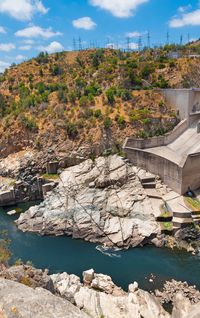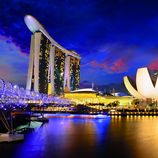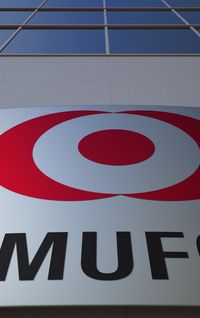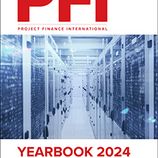German asset manager and developer Aquila Group established a new regional development platform, Aquila Clean Energy APAC, in 2020 and in just three short years has grown from developing Japanese solar assets backed by government offtakes to holding a 2.65GW development pipeline in five APAC countries. By Alexandra Dockreay.
Aquila Clean Energy APAC (ACE APAC) is on the cusp of transitioning from an early-stage developer in the region to managing assets in construction in five key geographies. With this transition into the build phase, project financings are on the horizon for 2024.
ACE APAC develops onshore wind, solar and battery assets from the earliest stages of project inception in OECD Asia markets, from growing local teams in Singapore, Australia, New Zealand, Taiwan, Japan and South Korea.
“What is different about us is we are set up as a fully fledged developer with in-house, end-to-end capabilities. We are not only bringing capital but are trying to bridge a gap which exists in Asia-Pacific between the local opportunity and the larger pools of capital that want access to these opportunities…,” says Alexander Lenz, chief executive officer of ACE APAC, based at the headquarters in Singapore.
Local teams
Each market in Asia-Pacific is different and has its own fundamentals and entry barriers, according to Lenz.
“We have almost doubled the headcount from 45 to 85 people this year, and a big focus was on growing the local organisations and preparing ourselves with more emphasis on the execution phase of projects, with more technical people and strong local teams to deal with local requirements,” he says.
He adds that he expects to keep growing the team, as the business continually seeks to add new assets and build a much larger portfolio in APAC.
Lenz joined Aquila to lead its APAC ambitions in 2020. He came from solar developer Conergy, where he was chief executive and had worked for 13 years initially in the headquarters in Germany, his home country, and then in regional leadership roles in Asia and the Middle East from 2010. The company had been a pioneer in the early days of the solar industry in Europe from 2000.
ACE APAC has made several key hires this year including Achal Sondhi as head of investment and portfolio management in Singapore, joining from batteries supplier Fluence, where he was general manager for Australia and vice-president of growth for APAC. Melbourne-based Dennis Freedman joined as managing director and head of Australia and New Zealand from fuel company Ampol Australia, where he was head of generation and decarbonisation. Earlier, he worked for electricity transmission company AusNet for eight years and renewables developer Octopus Investments Australia. Richard Chang joined ACE APAC in September as head of Taiwan, joining from Singapore-headquartered renewables developer Vena Energy where he was managing director in Taiwan.
Turning eastwards
Aquila Group was founded in Hamburg in Germany in 2001 by Roman Rosslenbroich and Dieter Rensch, as an asset manager targeting the ownership of essential assets throughout their entire value chain and lifetime for institutional investors. Aquila became a pioneer developer of renewables in Europe and also a carbon-neutral business in 2006. Now, the group has a renewables portfolio of 14.6GW combined in Europe and Asia-Pacific and Aquila manages €14.7bn (US$16bn) for institutional investors. As well as clean energy spanning wind, solar, hydropower and batteries, Aquila in Europe has invested in green logistics, green data centres, energy efficiency, real estate and carbon forestry. Projects brought into operations in Europe include one of Europe’s first four-hour batteries in Belgium.
Major Japanese investment bank Daiwa Securities acquired a 40% shareholding in Aquila Group in 2019 through subsidiary Daiwa Energy & Infrastructure. Aquila’s founders retained 60% ownership. Daiwa and Aquila had encountered each other on those earliest Asian forays by the German manager into solar assets backed by Japanese government feed-in-tariff offtakes.
Since gaining a major Asian backer, Aquila has set its sights on the enormous growth potential for clean energy in Asia-Pacific.
Aquila Capital has identified five target OECD markets in the region – Japan, Taiwan, South Korea, Australia, and New Zealand – and established development pipelines in each through its Aquila Clean Energy APAC arm.
Aquila Capital’s capital for project development comes through Europe, including Luxembourg, domiciled funds. These are pooled evergreen funds, meaning they can back the assets for their full lifetime. The funds are also constantly raising new capital to fund the developer’s acquisitions and project construction funding.
The majority of the limited partners in the funds are from Europe, but there is a growing investor base from Asia-Pacific including Daiwa. The core investors are from Germany, Switzerland and Austria. The range of institutional investor categories includes banks, insurance companies and churches.
Given the particularly long-term investment horizon offered by this capital base, the strategy ACE Clean Energy follows is to bring strong in-house development expertise to manage projects’ early inceptions and through assets’ lives.
Project financing phase
Lenz says: “We have brought online a Japanese solar farm recently, and we are moving toward construction start for a couple of assets in Australia and New Zealand coming up next year.”
The 8MW Japanese solar farm in Kimitsu, Chiba prefecture, was project-financed with ¥3bn (US$20m) of project debt from regional Japanese bank Ashikaga Bank and Aquila said it managed all aspects of the asset’s construction and operations. It benefits from a feed-in-tariff with the government. Aquila had started building its first Japanese solar farm in 2016, a 38MW project in Tomakomai.
The first projects are now poised for construction in other APAC markets.
This includes a first tranche of assets in ACE APAC’s 1GW solar project pipeline in New Zealand.
During 2024 banks can expect to start to see Aquila approaching the debt market. ACE APAC plans to use project finance debt in project funding structures. “In places like New Zealand where we have a bigger portfolio we will try to use that leverage and may go more for portfolio financings,” Lenz says.
In Europe, in September 2022 Aquila Clean Energy EMEA raised a €1bn euro construction club facility from commercial banks and the European Investment Bank, which can roll in different assets from a 2.6GW €2bn pipeline in Spain and Portugal. This approach suits the more mature portfolios in the European market better than the APAC portfolio at this stage.
New Zealand
In New Zealand, Aquila formed a partnership in 2021 with Far North Solar Farm (FNSF), and together they are working on a 1GWp solar development pipeline.
“For New Zealand, the portfolio is so massive compared to the market. Clearly, here the strategy is to be a dominant player in a relatively small market and to selectively grow later in wind and later on add battery storage to the solar assets we have,” Lenz says.
New Zealand’s previous Labor government set a policy of targeting 100% renewable energy by 2030, one of the most ambitious targets in the world, and net-zero by 2050. However the target may well be reduced, after the general election this year resulted in a new government led by the National Party. The country is starting from a high base, given its hydro and geothermal endowments, with already 87% of energy generation from renewable sources in 2022, according to Ministry of Business, Innovation and Employment figures.
Australia
In Australia, ACE APAC has assets in solar, wind and battery storage. ACE is generally not developing standalone solar, as it competes with rooftop solar, but solar coupled with a battery. Wind can be developed on a standalone basis, with standalone batteries.
In its first position in the country, Aquila acquired a 220MW/440MWh BESS project in South Australia from Grupo Gransolar last year. Aquila will continue to work with Gransolar’s E22 battery business on this development and others.
“We are very bullish on Australia, especially since the general sentiment to renewables has changed massively over the last two years or so,” Lenz says. “The challenges that need to be managed are around finding good locations in the grid. The grid is the biggest risk in Australia, so it is important to work with people who understand the grid and grid consultants and engineers to find a place where the marginal loss factor is likely staying above 0.9 for the foreseeable future.”
South Korea
In South Korea, ACE APAC in September this year signed an agreement to develop 300MW of solar in the country with local asset manager Alpha Asset Management and local developer partner Central ENG. Aquila has also teamed up with South Korean renewables developer Topinfra in 2022 for developing projects, including wind, solar and batteries.
“The [South Korean renewables] market was closed off for a while as there was no regulatory support and no policy, but now it is back and the government has targets to achieve net-zero …,” Lenz says. “The grid is being strengthened in parts of the country, which is a pre-requisite for more renewables. We think South Korea is a great market, and we like markets that are a bit more difficult so not everyone is there…”
Taiwan
In Taiwan, ACE APAC is developing solar farms above fisheries, an increasingly popular model given the land mass restrictions the small nation faces. The government has earmarked certain areas for solar development at fisheries. The developer has a portfolio of development solar projects of between 100MW and 120MW capacity in Taiwan. Initially, the focus is on solar, but ACE APAC is starting to consider onshore wind and battery developments there. The average size of a solar project in the portfolio in Taiwan is 50MW–80MW.
“We have a local team on the ground [in Taiwan] that does the permitting and community engagement with the fish farmers, which is crucial. These kind of developments could affect the livelihood of these people in a detrimental way if done wrong, or a very positive way if you get it right as they can access dual benefits from additional revenue streams. The whole social licence issue in this case is even more important than usual as this land is used for fish farming and we don’t want our solar activities to interrupt the other operation…”
“It is very complex as there could be 200 landowners for a mid-sized fishery solar farm and you must engage with all of them,” he adds.
ACE Clean Energy has secured feed-in-tariff contracts with the government and plans to also tap the corporate offtake market.
Taiwan offers a feed-in-tariff for 20 years, but corporate PPAs are becoming more attractive to project developers given higher tariffs. Developers can use the feed-in tariff as a floor on which to base their financing, but then also sign shorter term five or seven-year corporate PPAs that give the projects an uplift, before falling back on the government feed-in tariffs.
Japan
ACE APAC’s first market of entry, Japan, is transitioning away from the feed-in-tariff structure toward becoming a deregulated market.
“We expect the future revenue streams will be largely corporate PPAs and the [renewables] market in Japan is kind of finding itself in a transition. So here we are developing greenfield assets from scratch, finding land, good grid connection points, going through permitting, as we are convinced at some point they will get value,” Lenz says.
Given its Japanese shareholder Daiwa and existing experience in this country, ACE APAC is developing projects by itself in Japan.
Future growth
ACE APAC seeks to continue augmenting its portfolio in the five markets it has entered, rather than entering new markets.
The developer seeks mature technologies in the renewables sector, and when it comes to batteries will be developing the lithium-ion technology that has proven to be bankable. The focus is on technology that is well understood and mature, being currently solar, onshore wind, batteries, and combinations of these.
ACE APAC is comfortable developing assets backed by corporate offtakes or government-backed offtakes and does have some appetite for merchant risk.
“In some cases we could give our investment approval to start construction on a merchant basis but our strategy would always be to contract out a large part of the output once we are nearing commercial operations,” Lenz says.
But taking on the full development risk is a vital part of ACE APAC’s value offering, as the group seeks to buy early-stage assets well before they are ready to build. As an early stage developer in all five markets, Lenz says the company is very focused on social licence, which is becoming more and more vital. “Doing this work ourselves and not just going through external consultants is very important,” he says.
![]()
To see the digital version of this report, please click here.
To purchase printed copies or a PDF of this report, please email leonie.welss@lseg.com














